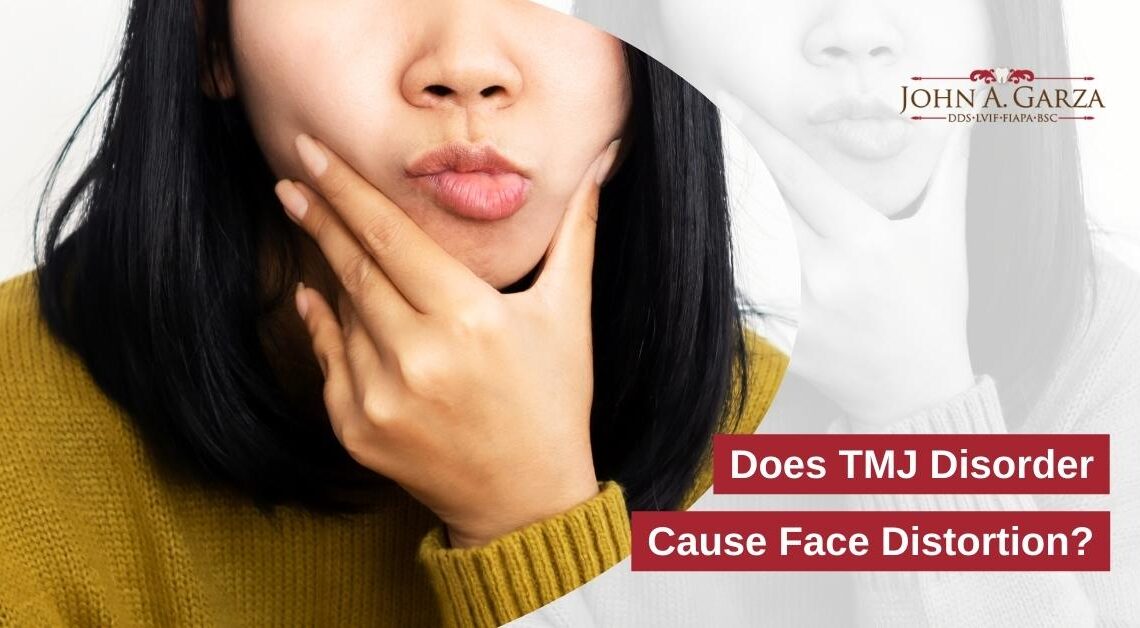TMJ (Temporomandibular Joint) disorders can produce facial asymmetry, with or without discomfort. Most of the time, these disorders can be managed without surgery.
A bite system imbalance is the cause of TMJ. No coordinated function exists between teeth, jaw joints, and muscles. The imbalance can result in various symptoms, such as jaw pain, headaches, tooth damage, and even ear symptoms, such as ear pain, vertigo, dizziness, and tinnitus (ringing in the ears).
Over time, an uneven bite can cause an asymmetrical facial expression, including a crooked grin and an imbalanced facial appearance. This might make people feel extremely self-conscious about their looks. Symmetry is one of the key qualities of beauty, and an unbalanced, asymmetrical face can cause feelings of insecurity.
Learn why TMD causes face changes and how to treat the condition.
What Causes Facial Asymmetry in TMJ?
There are often two reasons at play when TMJ is implicated in the development of facial asymmetry in patients. One of the causes involves the teeth. As TMJ can create substantially greater stress on one side of the jaw than the other, either while eating or during grinding episodes (bruxism), the teeth on one side of the mouth can get severely worn down. This results in an asymmetrical posture of the jaw. The grin may appear extremely crooked, and the jaw may have a distinct angle when closed.
The imbalance is not limited to the jaw, though. When the jaw is positioned in this manner, the body may attempt to achieve equilibrium by altering the posture of other body components, such as the spine, shoulders, and hips.
The jaw muscles can also create facial asymmetry. When the jaw muscles on one side work much harder than those on the other, they might enlarge, just like other muscles in the body. This might result in one side of the face seeming notably more muscular and swollen than the other.
TMJ Facial Asymmetry Treatment
A 3D scan helps determine what adjustments may be made and where and why facial asymmetry exists. This is a complete head and neck 3D scan. These are used by many skilled dentists who specialize in TMJ treatment.
Temporary Orthotic
Frequently, the teeth are improperly aligned, causing tension on the face muscles and neck, as well as facial asymmetry and muscular imbalance. This may result in one side seeming bigger than the other. Occasionally, the teeth press the jaw and muscles to one side, resulting in face tension and asymmetry. Both can be treated without surgery.
A temporary orthotic is typically constructed for this condition. This allows the patient to evaluate the bite and the muscles and joints to repair and return to a state of symmetrical balance.
When we realign your bite, we can rebuild damaged teeth as part of a full mouth reconstruction. This way, you can restore a more comfortable position for your jaw.
In addition, regulating the forces in your bite will prevent your jaw muscles from over-development of jaw muscles. Overdevelopment of muscles can be remedied by restoring the jaw’s balance and waiting for the muscle development to settle out.
This may also take time, but the big jaw muscle will shrink, resulting in greater facial symmetry and a more appealing appearance.
However, the following surgical procedures are typically recommended for treating TMJ facial asymmetry:
Total Condylectomy & Joint Replacement
When it is required to remove the complete condyle down to the neck, a total joint replacement implant is one surgical alternative. These mostly titanium implants are frequently custom-made to match the ramus and fossa of each patient’s jaw.
Genioplasty Surgery
In certain cases of jaw asymmetry caused by hyperplasia or hypertrophy of the lower jaw or condyle, the chin is off-center or tilted. The patient’s aesthetic problems might be addressed with a more straightforward operation employing a sliding genioplasty or chin implant.
Orthognathic Surgery
A surgical or orthodontic procedure, including sliding mandibular osteotomy or maxillary surgery, is nearly always required in cases of severe malocclusion. Frequently, it is preferable to repair a severe class III malocclusion with a maxillary surgical advancement as opposed to a mandibular surgical setback.
Moving the lower jaw posteriorly can impair airflow because the tongue always goes back when the lower jaw is moved posteriorly. This might result in obstructive sleep apnea. The most frequent therapy is mandibular surgery for facial asymmetry caused by the mandible and/or maxilla hyperplasia.
Read more: Are TMJ and Vertigo Related?
Consult with Garza DDS to learn more about whether TMJ disorder can cause asymmetrical face
Suppose you are experiencing any facial changes and believe they may be due to a TMJ disorder. In that case, it is important to consult with a TMJ specialist. Early diagnosis and treatment can help prevent more serious problems and even alleviate some of your symptoms. To learn more about whether or not you may have a TMJ disorder and what treatments are available, don’t hesitate to get in touch with our office today. We would be happy to answer any questions and provide additional information about this condition.


